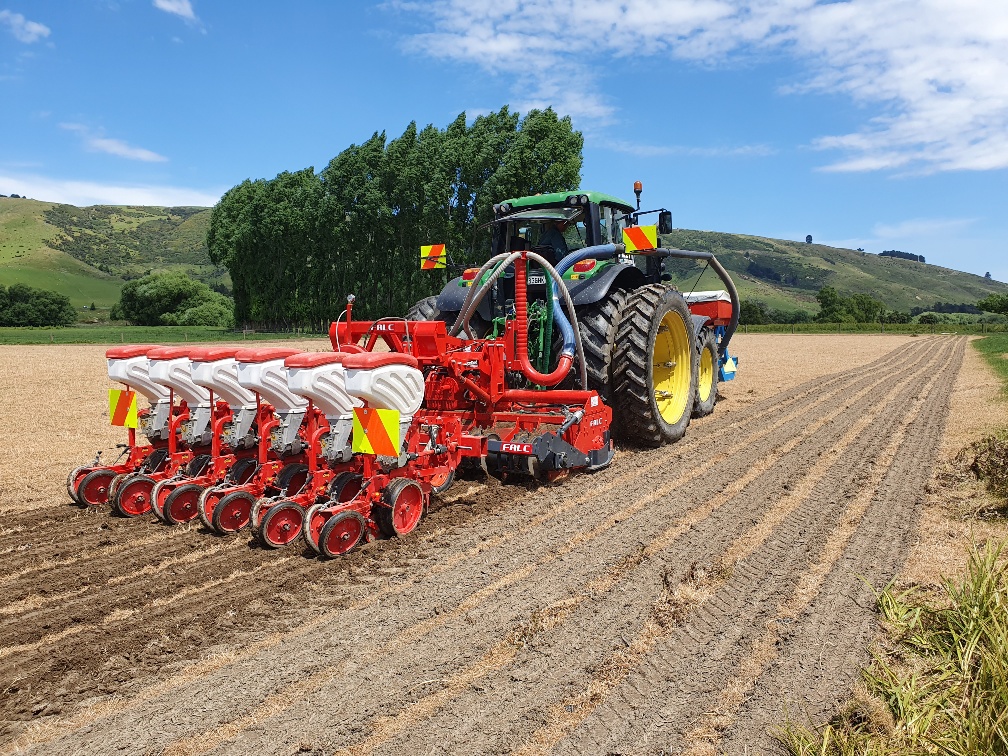Wanting to speed up cultivation time and improve soil quality?
The answer is Strip Tillage.
Strip-Till is a soil conservation system that has been booming in recent years due to efficiencies found by combining fertilization, sub-soiling, hoeing and seeding into a one-pass technology that only cultivates soil where the plant is actually planted. This reduces the passes required on a paddock.
While speeding up cultivation time and reducing money spent, it’s also environmentally friendly; the untilled strips help prevent and reduce erosion and soil compaction while preserving moisture levels.
The harsh New Zealand winters make Strip-Tillage the perfect solution for protecting the soil when grazing stock on fodder crops through the winter. Reducing the work needed on these paddocks means maintaining the soil structure for spring cultivation.
Contact us about the FarmChief Strip Till.
11 Benefits of Strip Tillage.
- Reduced labour, time & fuel use – Benefit from making as little as one pass for planting means fewer hours on a tractor and less fuel cost.
- Larger window of time for cultivation and sowing – fewer passes on the paddock means you get the job done better and don’t need to rely on long-lasting fine weather.
- Wind protected planting – Strip Tillage provides wind protection for young plants from the plant residue in the unworked row, preventing soil blasting the tender saplings.
- Improved soil tilth –
- The continuous no-till system increases soil particle aggregation (small soil clumps) making it easier for plants to establish roots
- Deeper root establishment means excellent crop yields due to the aerated ground and increased fertilizer uptake
- Minimised compaction from fewer passes in the paddock
- Increased organic matter – Research shows the more soil is tilled, the more carbon is released to the air and the less carbon is available to build organic matter for future crops. Strip-tillage reduces the overall tillage of the soil.
- Improved water availability – Overall, continuous no-till can result in as much as an additional 55mm of water available to plants in late summer.
-
- Keeping crop residue on the surface traps water in the soil by providing shade which reduces evaporation.
- Residue acts as tiny dams slowing runoff and increases the opportunity for water to soak into the soil.
- The channels (macropores) created by earthworms and old plant roots increases infiltration.
- Winter grazing advantages – firmer ground between the rows means stock can winter without excess mud and pugging damage.
- Less spray required – for weed eradication, with strip spray options.
- Reduced soil erosion – Crop residues on the soil surface reduce erosion by water and wind. Depending on the amount of residue present, soil erosion can be reduced by up to 90% compared to an unprotected, intensively tilled field.
- Improved water quality – Crop residue helps hold soil along with associated nutrients (particularly phosphorous) and pesticides on the field, to reduce runoff into surface water. Additionally, microbes that live in carbon-rich soils quickly degrade pesticides and utilize nutrients to protect groundwater quality.
- Improves air quality – Crop residue left on the surface improves air quality because;
-
- Reduced wind erosion, leading to a reduced amount of dust in the air,
- Reduced fossil fuel emissions from tractors by making fewer trips across the field, &
- Reduced levels of carbon dioxide released into the atmosphere through tying up more carbon in organic matter.
Interested? Contact us about the FarmChief Strip Till.
 FarmChief
FarmChief